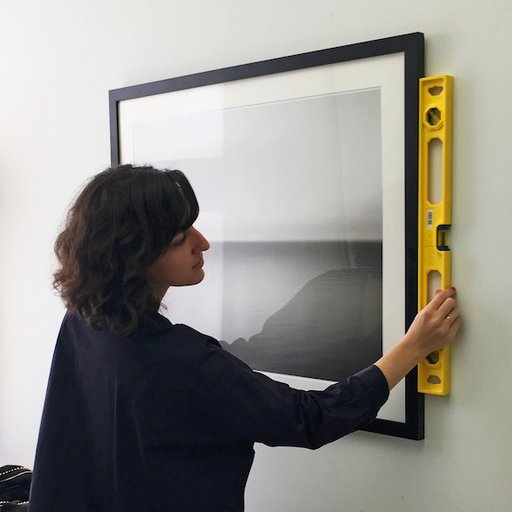In the latest edition of Off the Handle, Artspace's resident advice columnist and Director of Gallery and Institutional Partnerships Patton Hindle provides some words of wisdom on avoiding fair fatigue, forging a career in the arts, and more.
Have something else you want (or need) to ask Patton? Send her a note at offthehandle@artspace.com.
Everyone's always talking about art collectors, which makes me wonder: I have a painting in my living room that I got from a college friend, a few prints that I've picked up over the years, and a photograph that I won in a raffle once. Am I an art collector? What is the magical point where one goes beyond having art to being a collector?—Aspiring Packrat, Los Angeles, CA
It’s funny, I think if you work in the art world you shy away from calling yourself an art collector despite the fact that you likely regularly acquire work. There’s something that feels loaded about calling yourself a collector, which I think is what you’re commenting on here. We, in the biz, have this notion that to be an art collector it means you’re dedicating significant time, funds, and truly your life to supporting the arts. Speaking personally, I have come around to the idea that I am, in fact, an art collector—I spend my time, energy, and funds in the arts.
But, let’s break this down: the definition of collecting is getting similar things and bring them together as a hobby. To this end, I would ask, are you acquiring/accumulating works as a hobby? If so, sure, you’re an art collector. Of course, there are degrees to this term, supporting the arts within your own means is what’s most compelling.
I want a career in the arts but don't want to be an institutional curator (or spend the money to get the degree) and I don't want to do sales—what's left?—Contemplating Contemporary, Chicago, IL
When I finished university, I looked at a career in the arts with a very similar lens—it seemed there were only two “types” of roles. But, there is great news! If sales don’t strike your fancy and an extra degree seems out of reach, there are plenty of other areas in which you can make your start. A certainly incomplete list includes: project manager for arts organizations, nonprofit development, registrar/logistics controller, exhibition designer, art journalist (!), PR account manager, appraiser, event producer, studio manager, and gallery artist liaison.
While this is an impressive list, it is worth noting that many of these roles overlap and you’ll likely dabble in several over the course of your career, especially if you work in a small business like a gallery.
I’m opening a gallery in London and realize that fairs will be a necessary part of my business. It feels like there is nearly one every week of the year! How many should I aim to be doing?—Trade Trainee, London, UK
Great timing, coming off of a major fair week here, I’m certainly feeling fair fatigue. (Full disclosure: I attend 10-20 fairs a year, but visiting is very different than exhibiting.) In my gallery days, we participated in five fairs a year with a small gallery staff of three people. In all honesty, it was very taxing; however, it helped the business grow in a significant way and connected us and our artists to collectors, dealers, and curators we might not have met if we just stayed put in New York.
There are many factors to consider when looking into fairs. First, be choosy about which ones you apply to and be prepared, especially in your early days, to not get in. But keep sending in those applications to the right ones and as your programming develops hopefully it will pay off. It’s worth visiting a few to understand if your gallery is the right fit and, further, if you have an artist who makes the most sense for the audience. Also, speak to your fellow dealers—they’ll likely have good insight.
Second, be fully aware of the costs involved in participating. Fairs are a significant financial risk in the early days of a gallery. This is, in part, why it’s worth selecting the right fairs. Costs are not always financial, too. Keep in mind the size of your staff and what is mentally and physically sustainable for you and them. Finally, the location of the gallery and volume of your foot traffic may dictate how many fairs you need to do to sustain the business.
How do I know whether something is “good?”—Quality Control, Berlin, Germany
Is it red? Is it shiny? Have you seen it in your Instagram feed more than 15 times? Then it’s probably not good.
Kidding aside, taste is individual. Like what you like and be open to changing your mind, too. I recently saw a museum exhibition that completely flipped my mindset (to the positive) on a painter, and I’ve seen a lot of their work before. Like most things, what you appreciate will change and develop. The best way to know what is “good” for you is to look, look, look.
























